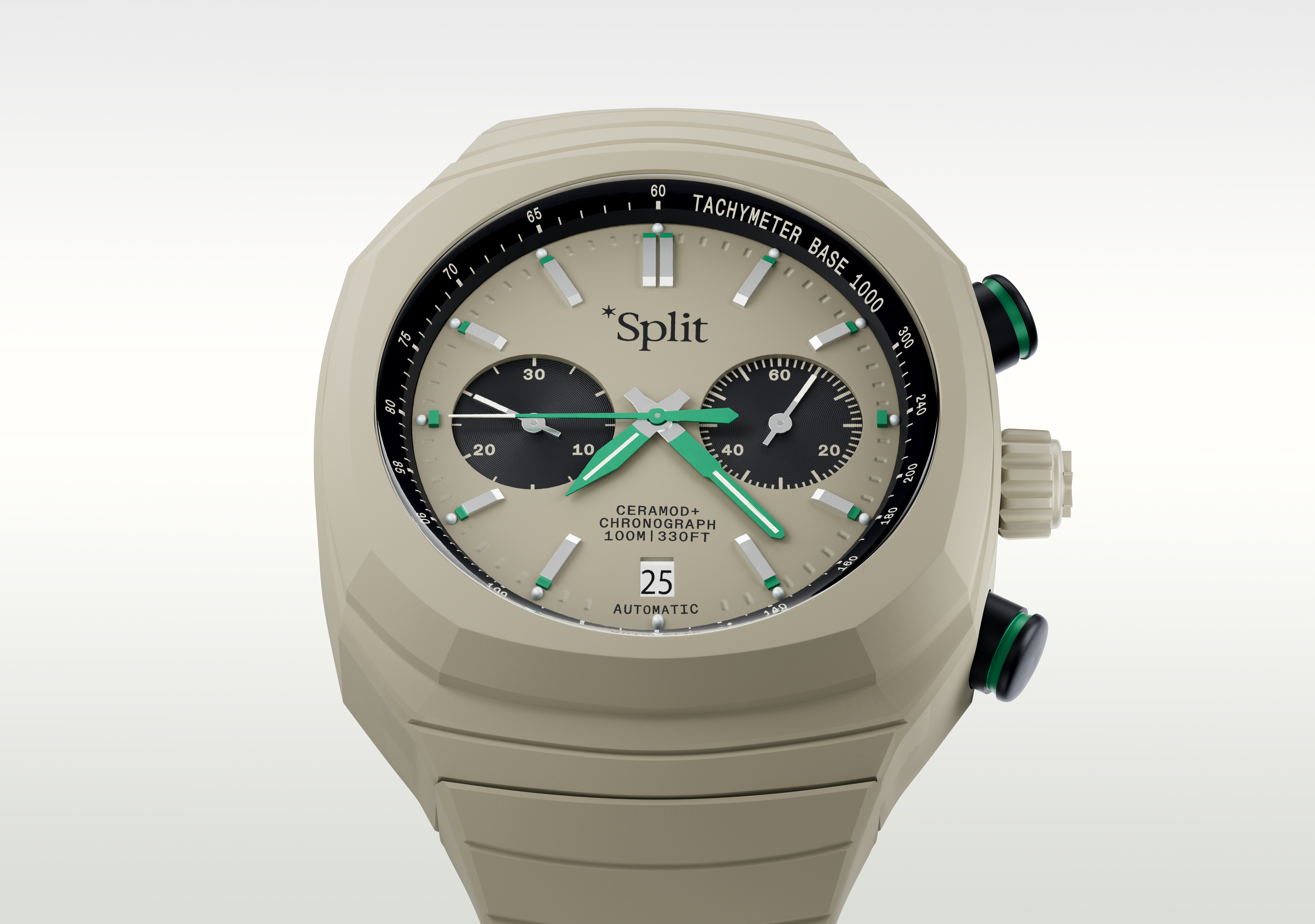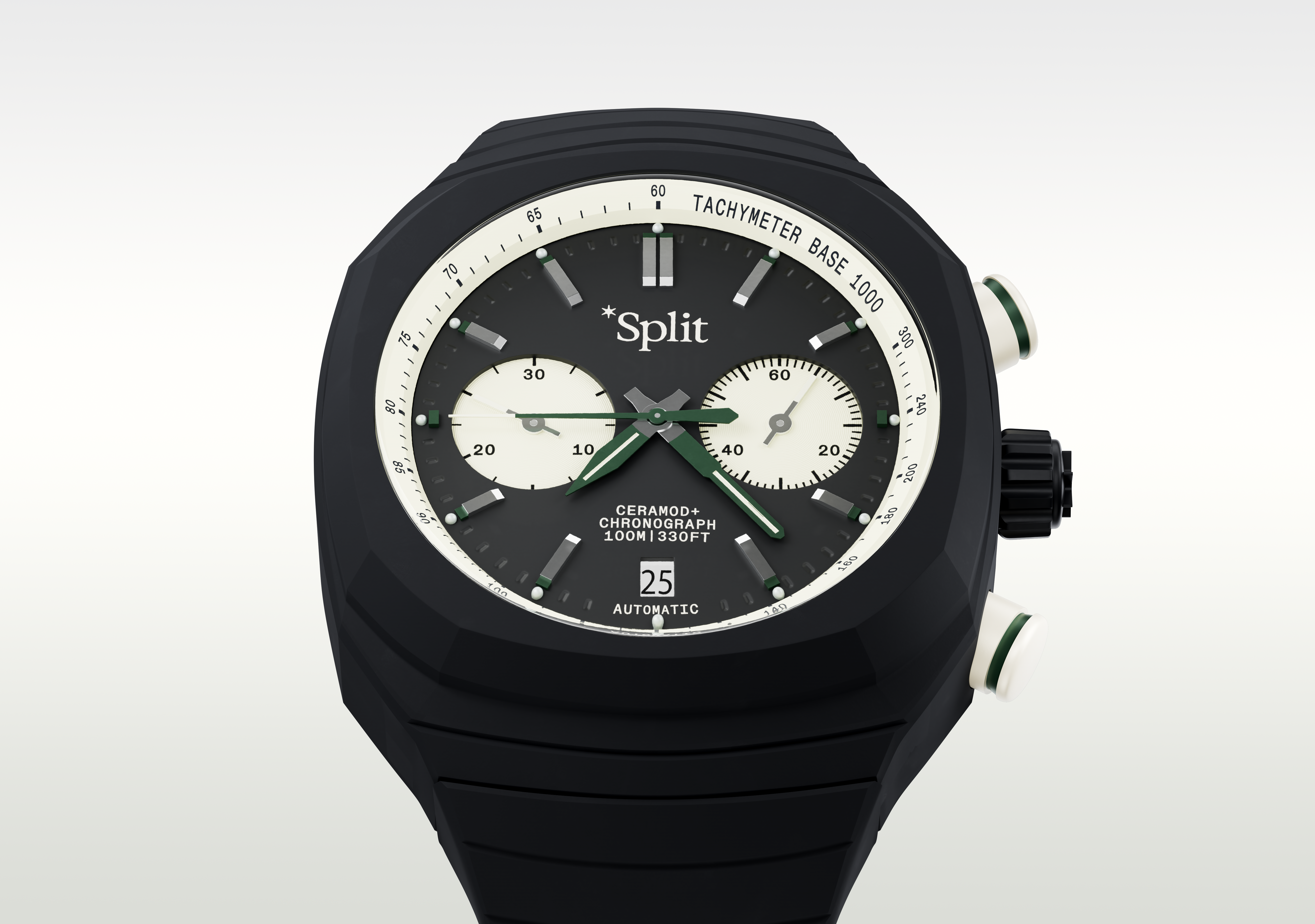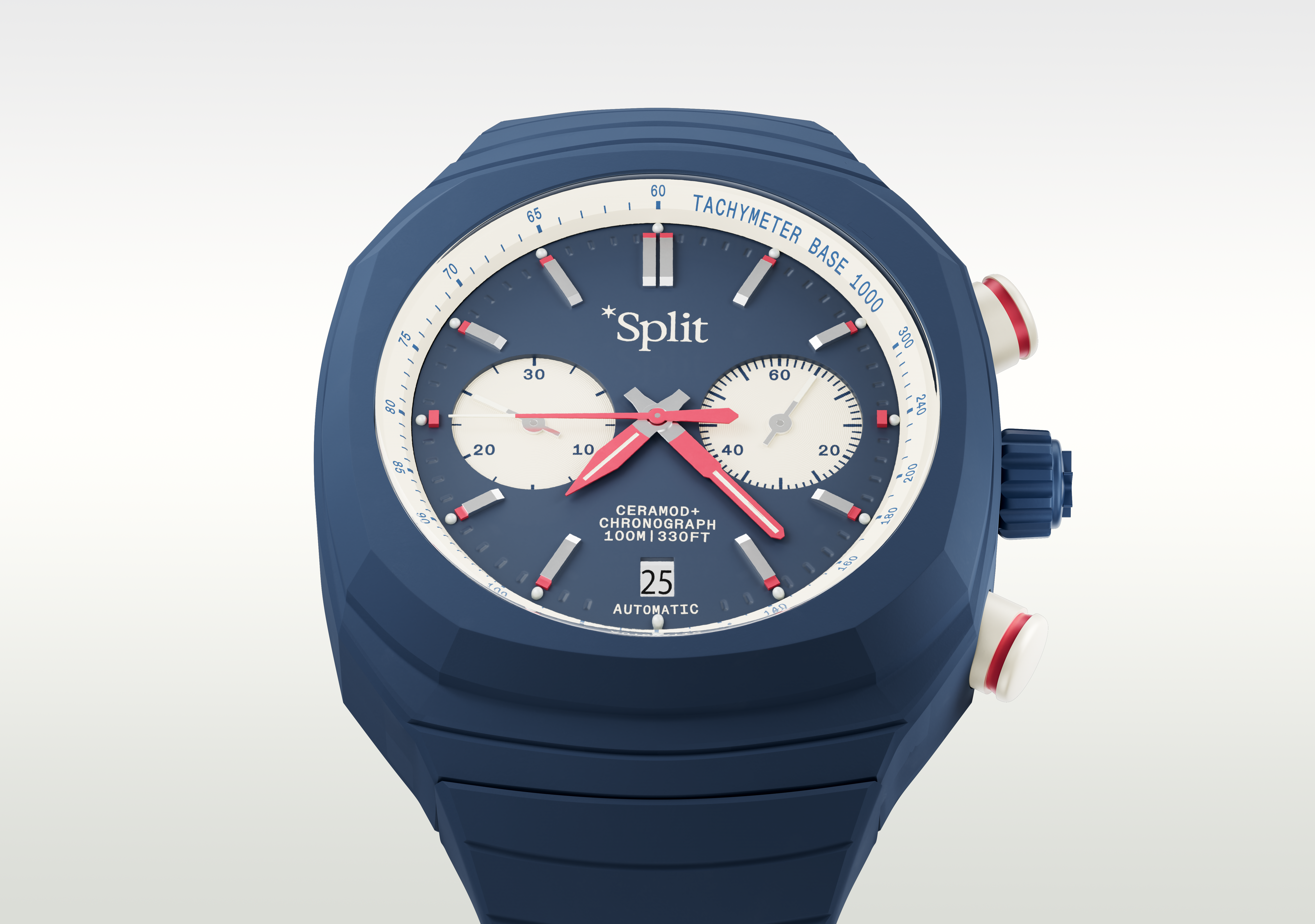Introducing the design-led Split Watches, a force for good
Good design is given a charitable spin by Split Watches – for every one sold, the company donates an hour of therapy
When Edward Margulies set out to create his own watch brand, the ex-brand manager of Blancpain, Audemars Piguet and Vacheron Constantin knew that it would have to be something very different to stand out in a crowded market. The result is Split Watches – formed with business partner Dara Amjadi, and with film director and DJ Don Letts as unofficial brand ambassador – and its debut MC chronograph.
‘The world is not short of new watch brands, but I think it is short of those that have some kind of different meaning,’ says Margulies. ‘In the luxury business, there’s a fascination with mechanics, history and status – the last in a way that is likely not very healthy for us collectively – and I think there’s an opportunity for a watch that starts to change the conversation.’
Consequently, for every Split watch sold, the company will donate the equivalent of one hour of therapy costs to someone experiencing trauma, through the Anna Freud charity, which has been working with children and young people’s mental health for over 70 years. As a visual cue for this, whereas most analogue watches are traditionally displayed in marketing materials with the hands set at 10.10, Split’s are shown with hands set at around 7.20 – creating a downturned smile, or ‘Braveface’ as Split refers to it in a forthcoming promotional campaign.
‘The idea for launching Split came from my own experience of a traumatic childhood that over time ate me up mentally and physically, and eventually left me in no fit state to do anything,’ Margulies explains. ‘I was 53, a bloke, not encouraged to get real with my feelings. But over time, just talking to people changed that. They started talking to me about their feelings too. I realised not many people my age don’t have something they’re struggling with. Watches have long been an expression of success. It’s a change for them to express [human fragility].’
‘It’s watch that will likely sit more comfortably in the “design” market rather than the traditional watch one’
Edward Margulies
Not, he concedes, that such an unusual position for the glossy watch industry is enough to drive sales – the watch must be distinctive too. To this end, Split’s first chronograph uses a case made of what the company is calling ‘Ceramod’, a mix of ceramic and various polymers, the latter unnamed while Split seeks a trademark.
The material gives lightness, warmth to the touch, high scratch-resistance and the possibility to be produced in a wide variety of colours, with the first edition of the watch in black (MC-2) but also blue (MC-3) and beige (MC-1). Khaki, chocolate brown, bright yellow and a 100 per cent luminescent edition will follow. The integrated strap, meanwhile, is made of FKM, or fluoroelastomer, a synthetic rubber that moulds to the wrist and is resistant to sweat, chemicals and bacteria. The straps can be personalised with hand-written calligraphy on request.
‘FrankIy it would have been a lot easier to use steel [for the watch], especially as these materials are much more expensive and part of the challenge now will be getting across the value of their utility – so people don’t assume they’re seeing just a plastic watch,’ says Margulies of the £1,800 MC series. ‘But this use of materials, I think, speaks to a luxury market in which, increasingly, people don’t want something that looks like the watch everyone else is wearing. It’s a watch that will likely sit more comfortably in the “design” market rather than the traditional watch one.’
Receive our daily digest of inspiration, escapism and design stories from around the world direct to your inbox.
The MC watch also comes with a not-often-seen bi-compax N86A automatic chronograph developed by Seiko some seven years ago, scooping four patents, including the development of a vertical clutch and three-point hammer, allowing for a simultaneous reset of all three timing hands. Typography, including the brand logo, imagery and website, has been designed by the London-based 20(Something), which counts among its clients Williams F1 and Woolmark.
Split Watches is now in the process of developing its second model, a GMT – with colour combinations inspired by those of classic album covers – set for launch by the end of this year. A sub-£100 model from the brand is also in the pipeline.
Josh Sims is a journalist contributing to the likes of The Times, Esquire and the BBC. He's the author of many books on style, including Retro Watches (Thames & Hudson).
-
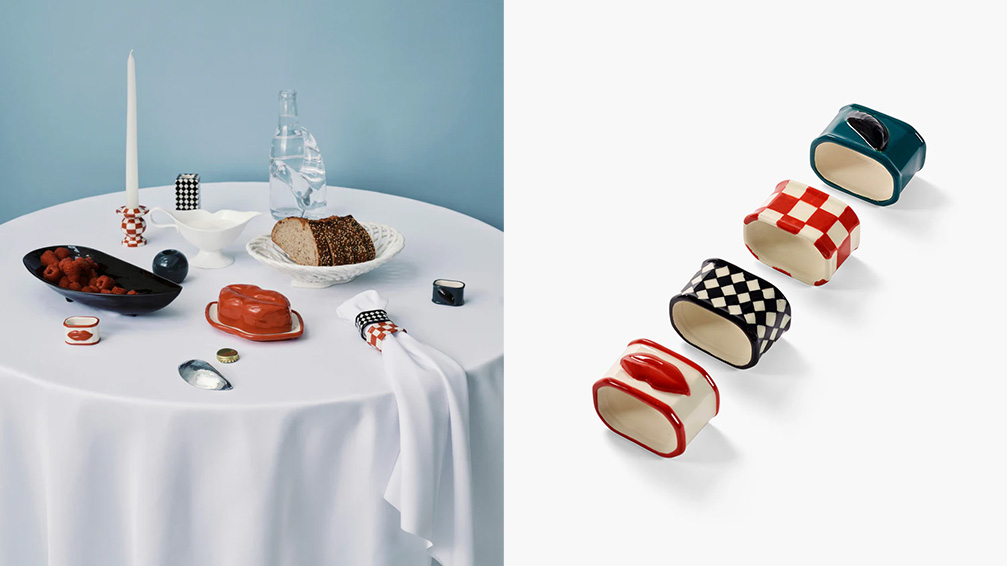 Sculptural, design-led napkin rings for festive tables
Sculptural, design-led napkin rings for festive tablesThe simple napkin ring harbours the potential to bring a stylish punch of personality to any table setting
-
 How Peter Saville came to art direct the best of contemporary culture
How Peter Saville came to art direct the best of contemporary cultureFrom Peter Saville's first steps with Factory Records and legendary album designs to his later work in art and fashion: we chart the history of the British art director
-
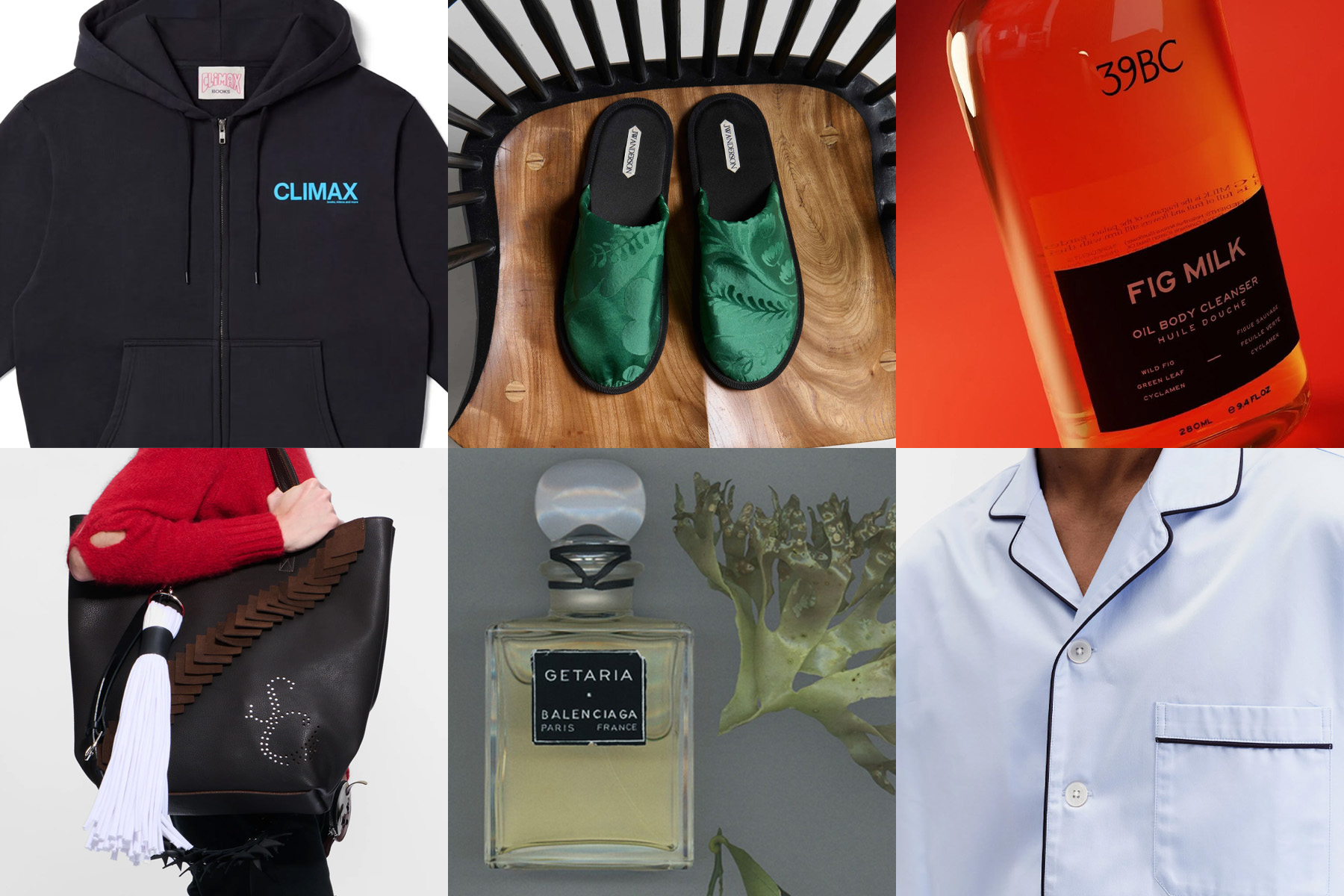 Wallpaper* Gift Guides: What our Fashion & Beauty Features Director, Jack Moss, has on his wishlist
Wallpaper* Gift Guides: What our Fashion & Beauty Features Director, Jack Moss, has on his wishlistFestive gifting is about a balance of indulgence and comfort, says Wallpaper* Fashion & Beauty Features Director Jack Moss – here encapsulated in silk slippers, classic pyjamas and an oil cleanser based on ancient bathing rituals
